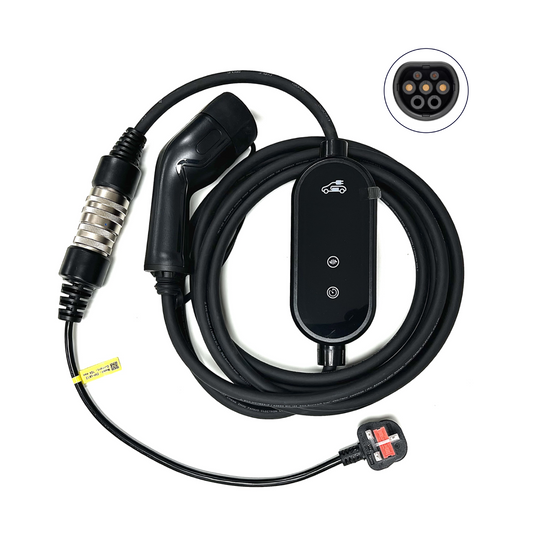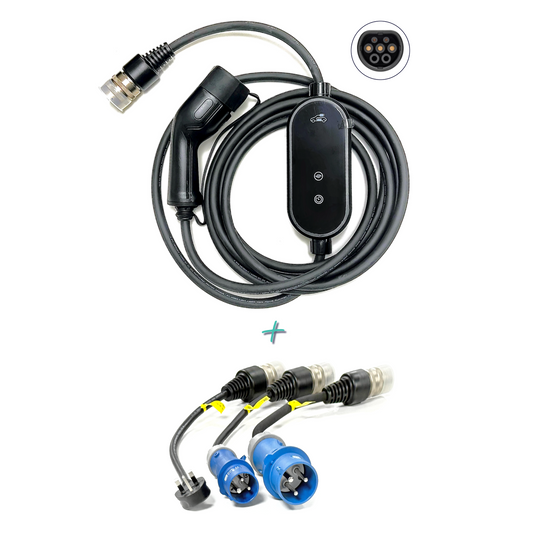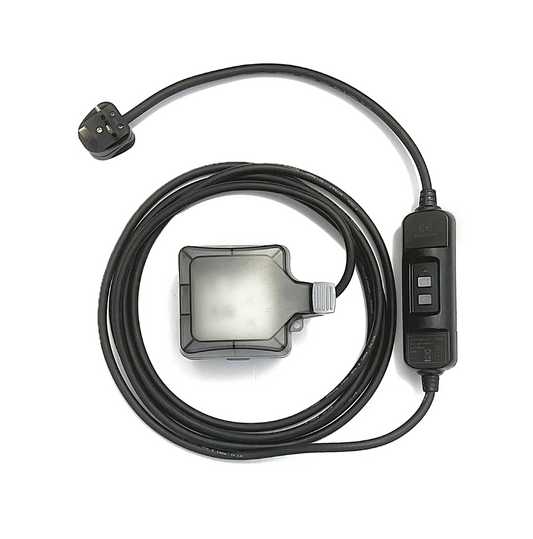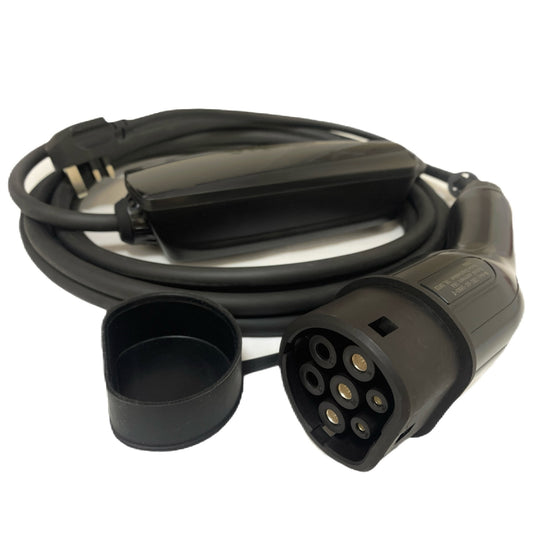
Commonly referred to as a ‘granny cable’, a portable EV charger consists of a 13A plug, a control box containing the charger (known as EVSE) and a connector cable which connects to the EV. The connector will either be Type 1 or Type 2.
Portable chargers plug straight into a normal household socket and are handy in an emergency when you can’t find a working charging station, or for use when visiting relatives such as your granny, hence the nickname granny cable.
This type of charging is widely referred to as Level 2 (Mode 2) Charging in North America.
The downside is that because they plug into a regular household socket, they are limited to draw no more than 10A of current (equates to approx. 2.3kW of power supply) which translates to about 80 to 100 miles of range from an overnight/12 hour charge.
⚠ Safety Note:
Using a portable charger for extended periods can lead to overheating and, in extreme cases, even fires. Electric cars draw as much power as an oven when charging, but for hours at a time—something regular sockets and cables aren’t designed to handle. For this reason, most portable chargers are intended as emergency backup options rather than a primary charging method.
ⓘ Did you know? The next generation of EV portable chargers is setting new standards in performance, safety, and versatility. Learn more about next-gen portable charging.








